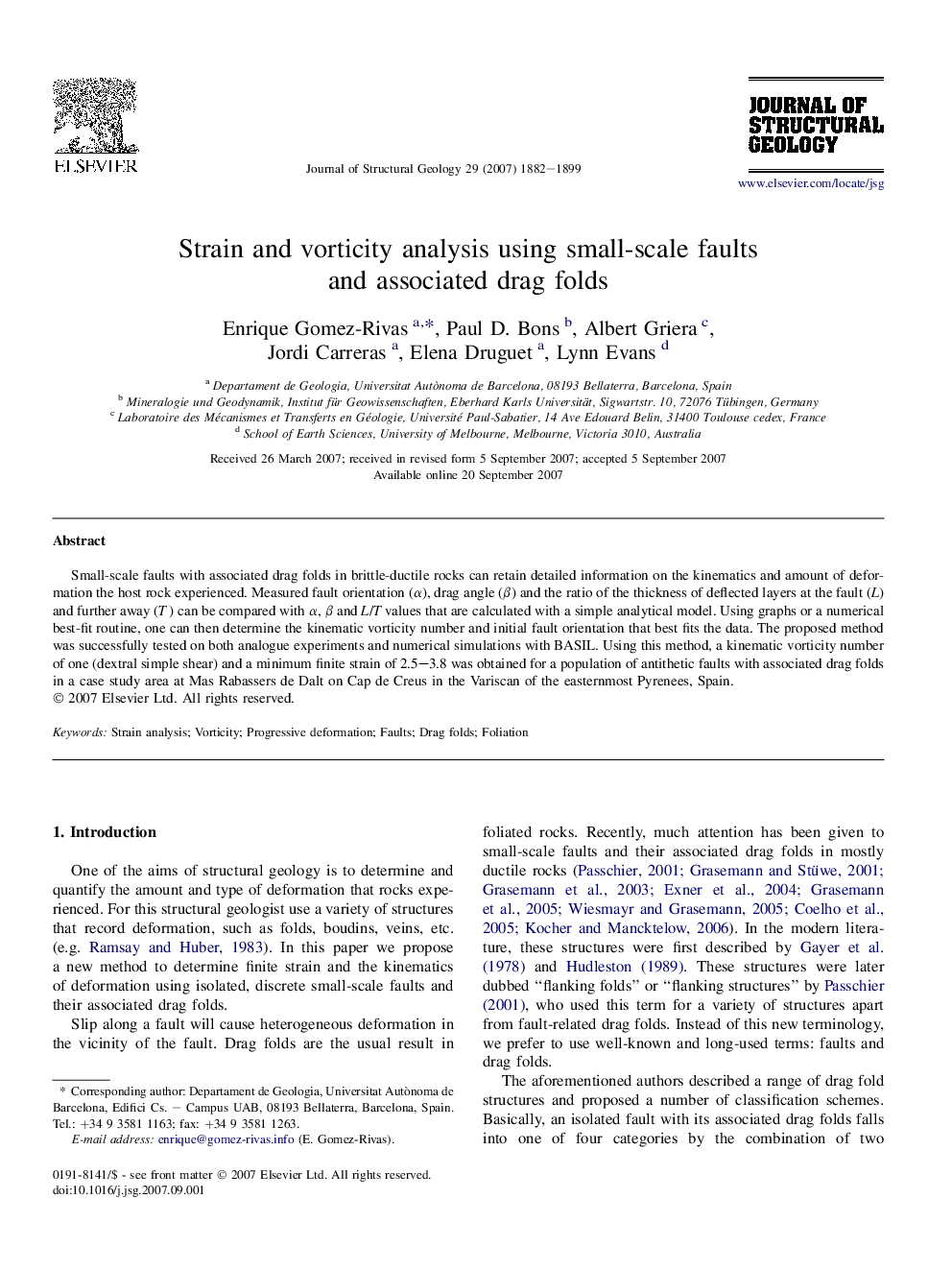| Article ID | Journal | Published Year | Pages | File Type |
|---|---|---|---|---|
| 4734153 | Journal of Structural Geology | 2007 | 18 Pages |
Small-scale faults with associated drag folds in brittle-ductile rocks can retain detailed information on the kinematics and amount of deformation the host rock experienced. Measured fault orientation (α), drag angle (β) and the ratio of the thickness of deflected layers at the fault (L) and further away (T) can be compared with α, β and L/T values that are calculated with a simple analytical model. Using graphs or a numerical best-fit routine, one can then determine the kinematic vorticity number and initial fault orientation that best fits the data. The proposed method was successfully tested on both analogue experiments and numerical simulations with BASIL. Using this method, a kinematic vorticity number of one (dextral simple shear) and a minimum finite strain of 2.5–3.8 was obtained for a population of antithetic faults with associated drag folds in a case study area at Mas Rabassers de Dalt on Cap de Creus in the Variscan of the easternmost Pyrenees, Spain.
